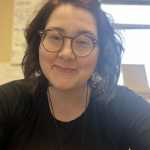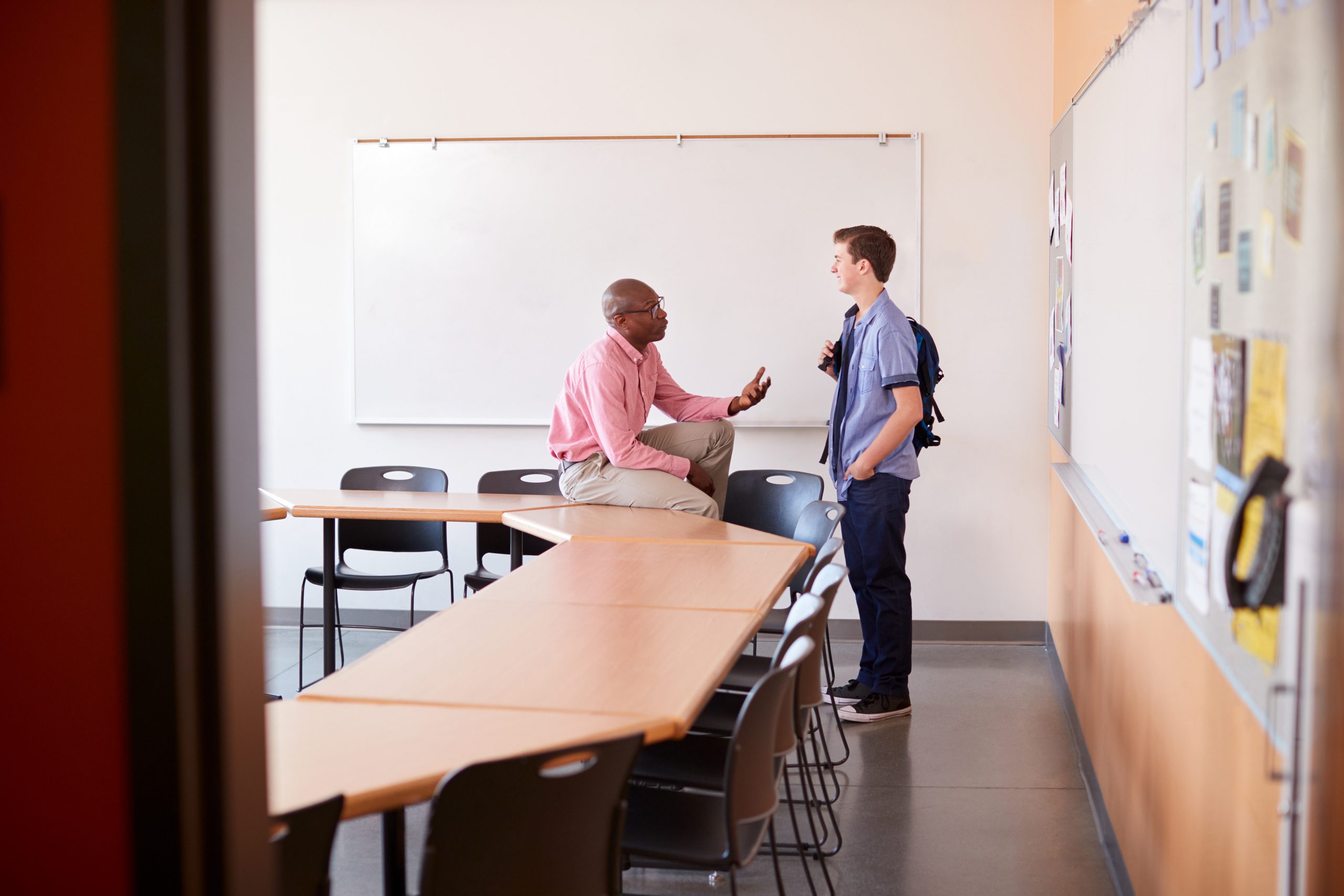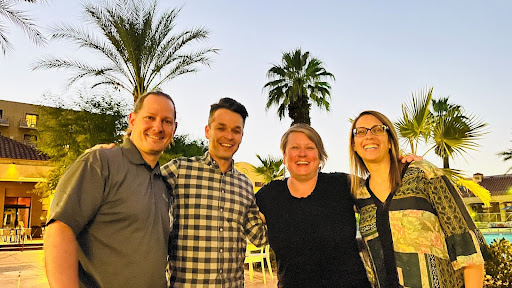Spotlight blogs celebrate excellence in our Learning Innovation Network. This post is the second of three in a series about mentoring, also known as advisory. In Part 1, we learned about why the staff at the West Ada Academies in Idaho moved to mentoring and the foundational tools they used to support their mentoring programming. In Part 2, we’ll learn how relationships, routines, rituals, and systems create a vibrant culture of mentoring. This series is written by Julia Miller, Instructional Coach, Meridian Academy, West Ada School District, Idaho.
“Homeroom” is often home to just administrative tasks: attendance, passing out papers to take home, and listening to/watching morning announcements. A mentoring program, on the other hand, requires intentional planning and careful cultivation.
For example, establishing a community space and boundaries for how humans interact in that space is imperative for mentor groups. Norms that bolster respect, empathy, and understanding send the message to students, “this is how we do things in this community.” When those norms aren’t followed, the group seeks to restore relationships and uses affective statements rather than punishing mistakes or keeping track of wrongs.
Next, it must be clear the mentor is the champion for their mentees. In a TED Talk with over 14 million views, educator Rita Pierson says, “Every child deserves a champion- an adult who will never give up on them, who understands the power of connection, and insists that they become the best that they can possibly be.” West Ada Academy student Ashlee, 16, says, “I love my mentor. We talk, she is open. I have had study hall classes at other schools. This is nothing like them. Amber knows who I am.”
Finally, good mentors also value their mentees’ families and networks of support outside of the immediate school community. Mentors communicate on a regular basis with families to ensure collaboration. Celebrations, growth, learning opportunities, behavior, attendance are just some of the topics mentors talk about with parents and guardians. Mentors showing they care about the mentee as a human and learner while valuing their home life brings everyone together around a common goal: the development and nurturing of the mentee.
One parent said, “Mentoring is great because of the consistency of having the same person each year be my kid’s person. There is such a great relationship between the student and their mentor. They motivate them to get to school and complete their work.”
Another parent said, “Our son was having challenges and his mentor, Julie, went above and beyond to make sure he had the flexibility he needed. Had she not done that, he would not be graduating this year.“
Building Community and Ownership
Another critical focus of mentoring is community-building. This is something that doesn’t happen to students, but rather by students. Early on in the mentoring process, mentor groups create a group name, a symbol or flag, a motto, a song, passwords, sections of the classroom for mentees only, and other rituals and structures that make the group feel welcoming and special.
One strategy that has been successful in community building are circles. Circles can be used in a variety of ways, such as check-ins, connecting and restorative practice. This time is set aside to come together in a literal circle (chairs, sitting on the ground, standing) and bring our best selves to accomplish the goal of the community.
Check-in circles can take just a few minutes of mentoring. The community gathers to ask low-stake questions like, “How is your weather today?” Mentors can use this information to make sure everyone has what they need.
Connecting circles go a bit deeper than check-ins. Questions like, “What is it like to apologize to others?” or “What has life taught you this week?” helps students reflect on their internal world and share with their community.
Restorative circles are reserved for moments when repair is needed and is facilitated by a trained teacher on staff. There are three phases: reflection, discussion, and restoration.
Andy, a mentee, shares, “Mentoring is helpful. It gives you a chance to connect with peers. I really like circle talk- you get to say what you think and no one is going to judge you. We also do mindfulness activities. I feel like all of Jeffrey’s mentees feel known.”
Another strategy for community building is creating activities that provoke participation like thinking prompts. Ashley, a mentor from Meridian Academy, shares an activity she facilitated recently that helped build community:
“I created a scale of strongly disagree to strongly agree and created a list of prompts for students to decide where along that scale they would place themselves. I started seeing my own predictions of where students would go be contradictory to their actual choices.” One prompt asked, “I like the way I look.” The majority of students went to “Strongly Disagree.”
While heartbreaking, it does show Ashley where her next steps could be in creating activities for her mentor group. Ashley is now planning on “doing a circle on self confidence, a lesson on beauty standards, and an activity for what we see as beautiful in one another as a mentor group.”
Students can co-create activities for the mentor group as well. Mentees can generate and share ideas for activities, take on entire projects for their mentor group to learn from and participate in. Some examples are Pick Up Trash Day, Positive Post-It Day, or Make the School 1% Better Day.
Progress through Partnership
In our learner-centered model, we shift to the needs of the learner and turn from traditional mindsets that often revolve around systems. Instead of gravitating toward ‘You get it or you don’t’ thinking, we instead become partners in the work. We bring clarity, support, and strategies to help a student reach their goals. We have two strong ways to do this: holding regular one-to-one conferences with students and monitoring data.
One-to-one conferences are times inside mentoring where mentor and mentee talk about the goals the mentee has and how they are progressing to get there, barriers in the way, and solutions to those barriers. Creating new templates and systems can be difficult to begin with, so trying new things and gathering ideas from fellow mentors can be very helpful and saves time. One-on-one conferences can include:
- celebrating success (shout outs, growth in a competency, flipping a portfolio)
- updating mentee PLPs (Personalized Learning Profiles)
- analyzing data and student work
- setting and monitoring goals
Slate, our CBE learning management system and our one-stop data shop, is the go-to place for many mentors. However, nothing can replace getting clarity from the teacher offering the experience. Going together with a mentee to talk and clear up misunderstandings can go a long way in making the space safe and successful for a mentee.
Mentors also create opportunities for each mentee to be known through the Personalized Learning Profile (PLP). PLPs present the opportunity to explore one of the tenets of learner-based systems: personalization. Students explore their own passions, interests and curiosities and communicate on the PLP. They document their network of support and other key information about themselves. Mentees can put their projected graduation date into their My Progress tab and track their journey.
By creating community and analyzing data, mentors guide students on their path to success. This partnership between mentors and students fosters a dynamic learning environment focused on growth and personalization that challenges and enriches the experiences of everyone in the room.
In Part 3, we’ll learn about goal setting in mentoring and what the West Ada Academies team learned from this shift to mentoring.
How do you build community in your school? Tell us in the comments!
Author

Julia Miller has been a teacher and instructional coach in the West Ada School District for eight years. She has a passion for learner-centered systems. You can contact her at Miller.Julia@westada.org.




